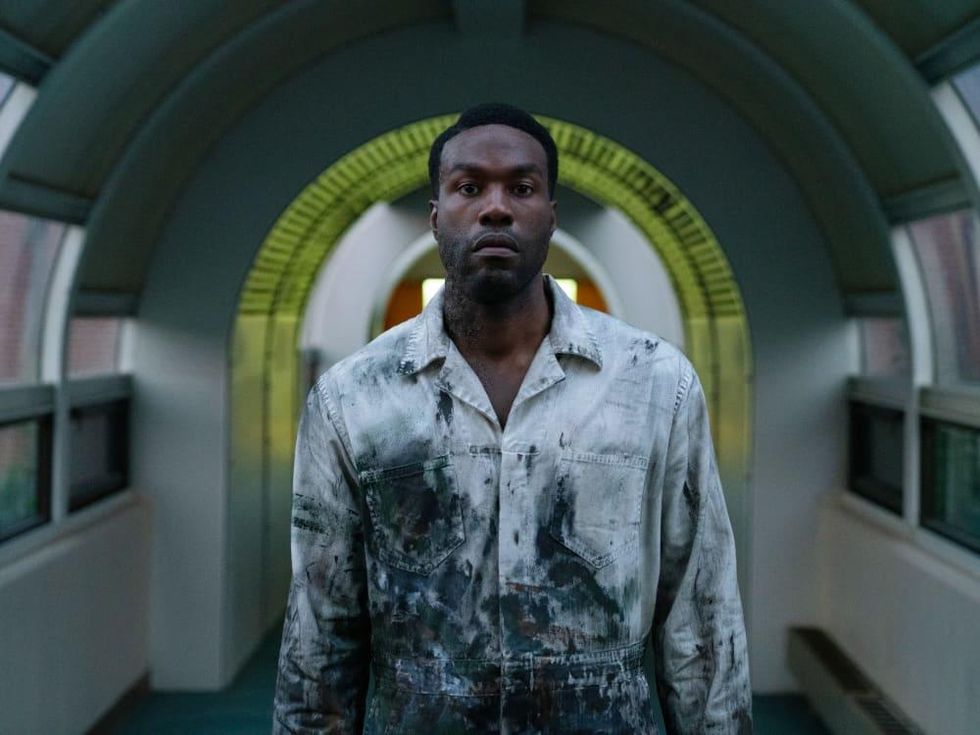Movie Review
Candyman remake provokes a scary good racial reckoning
Throughout their history, horror movies have often been allegories for more serious subject matter. You name the real-world concern, chances are it’s been addressed in some form in a horror movie. In 2017, writer/director Jordan Peele kicked off a new reckoning of race issues with his stellar Get Out, a theme that now continues with the remake of Candyman.
Yahya Abdul-Mateen II stars as Anthony McCoy, an artist living in Chicago with his girlfriend, Brianna Cartwright (Teyonah Parris), who works at a local gallery. The couple lives in a condo on the site of what used to be the Cabrini-Green housing projects, a notable example of gentrification in the city. On the hunt for his next artistic inspiration, Anthony finds a laundromat owner named William (Colman Domingo), who tells him a story about a notorious killer named Candyman, who has a hook for a hand.
Soon, Anthony finds himself going down an artistic rabbit hole, creating works that address and may even summon Candyman, who is said to come out when you say his name five times into a mirror. His obsession manifests into a physical one, affecting his body as well as his mind. And as he and those around him discover, the idea of Candyman is one that has a long and brutal history.
Written and directed by Nia DaCosta, with co-writing credits going to Peele (who’s also a producer) and Win Rosenfeld, the film is a “spiritual sequel” to the 1992 film starring Tony Todd and Virginia Madsen. While it pays homage to that film in a variety of ways, it’s really a complete reimagination for modern times, confronting racial problems head-on through its storytelling.
Without giving too much away, the film addresses systemic racism through dialogue about housing, white gatekeepers, policing, and more. It also brings up the long history of Black men who’ve been unjustly accused of crimes, tying in that shameful practice with the story of Candyman in a manner that’s horrific way beyond anything shown on screen in the movie.
To that end, some of the most potent imagery in the film is not of the various killings, but of paper marionettes used to great effect throughout, including during the end credits. DaCosta doesn’t seem as interested in the visceral gore of horror films as other filmmakers, often allowing carnage to happen off-screen or from afar. But the detailed marionettes, which are portrayed via shadows, are fascinating and sometimes gut-wrenching to watch, depicting scenes that are just as appalling as if they had filmed real people.
Because the focus is on the message more than the gore, the film doesn’t try to entertain its audience as much as other horror movies. While that will work for some (like me), it may not for those who just want a few great jump scares. The 92-minute film also contains few narrative jumps that cause some confusion, but they’re minor considering the impact the rest of the film has.
Abdul-Mateen, last seen in an impressive but small role in The Trial of the Chicago 7, is fantastic in this part. As Anthony degrades, Mateen sells the journey in big and small ways. Also great is Parris, who’s gained notice for playing Monica Rambeau in Wandavision; she and DaCosta are teaming up again for The Marvels, due next year. Parris’ enviable eyes allow her to express in a way that makes the audience feel every ounce of love and fear her character has.
The new Candyman works on almost every level, giving a new spin on abhorrent topics that stubbornly persist despite many people’s best efforts. It joins the ranks of the best kind of horror movies, ones that actually have something to say amid the bloodshed.
---
Candyman opens in theaters on August 27.




